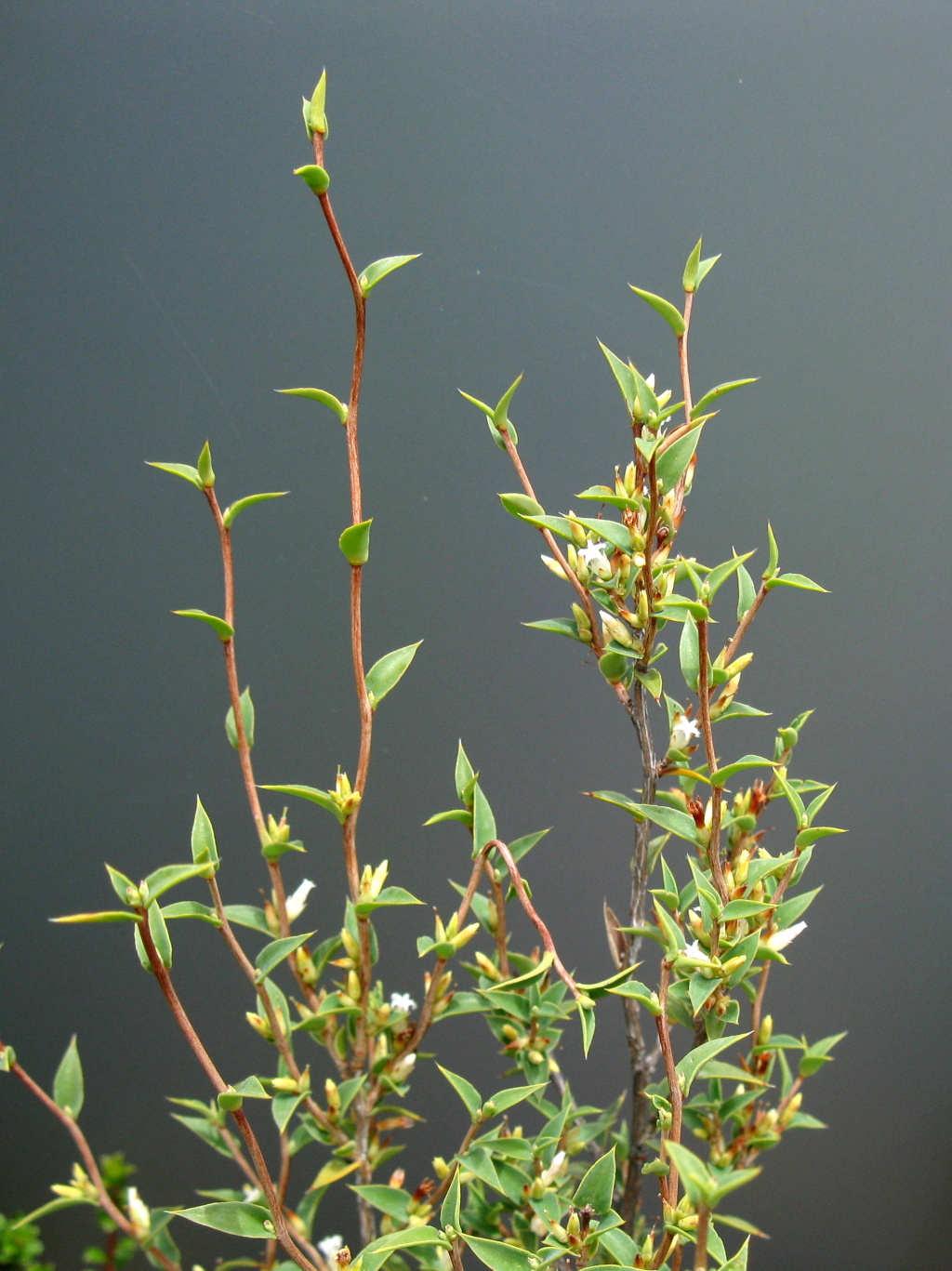Styphelia rufa
(Lindl.) F.Muell. Spoon-leaf Beard-heathErect shrub, usually 30–60 cm high; branchlets glabrous to finely pubescent. Leaves erect to spreading, ovate, 6–12(–25)mm long, 2–5 mm wide, concave to rarely flat, somewhat discolorous, paler below, glabrous to pubescent; margins entire to minutely toothed; apex aristate. Flowers white, soon reddening on drying, 2–5 in axillary spikes 6–9 mm long; bracteoles ovate to almost orbicular, 1.4–2.0 mm long, broadly acute, glabrous to sparsely pubescent; sepals narrowly ovate, 3.1–4.6 mm long, apex acute, glabrous or with scattered hairs; corolla 5.3–6.6 mm long, lobes shorter than the tube, acute, densely bearded within; anthers lacking sterile tips; ovary 2- or 3-locular, glabrous, style 2.1–4.2 mm long, hairy. Fruit ovoid, c. 6 mm long, with paler ring-like rim at apex, part of style frequently persisting for some time. Flowers Nov.–Mar.
LoM, MuM, Wim, VVP, VRiv, Gold, CVU, GGr, DunT, NIS, VAlp. Also SA, NSW. Occurring mainly in heathland on sandy soils in the mallee regions with scattered disjunct occurrences across northern and north-eastern Victoria where chiefly a species of shallow, rocky soils in dry woodland.
Grampians specimens tend to have larger, more pubescent leaves and frequently the sepals and external surface of the corolla lobes are sparsely hairy.
Powell, J.M.; Walsh, N.G.; Brown, E.A. (1996). Leucopogon. In: Walsh, N.G.; Entwisle, T.J., Flora of Victoria Vol. 3, Dicotyledons Winteraceae to Myrtaceae, pp. 494–509. Inkata Press, Melbourne.
 Spinning
Spinning
